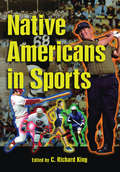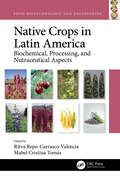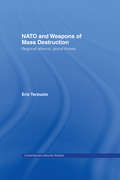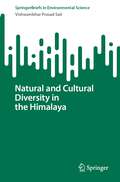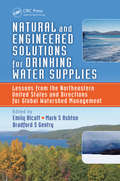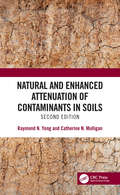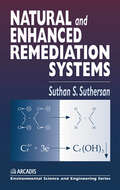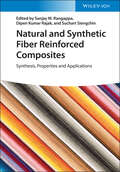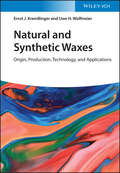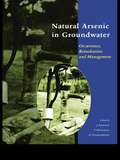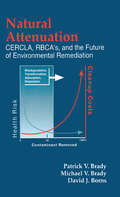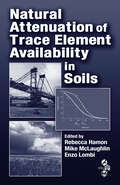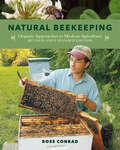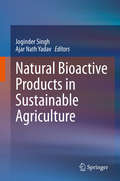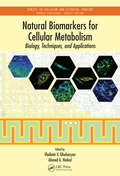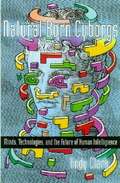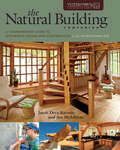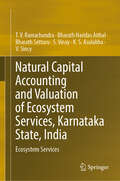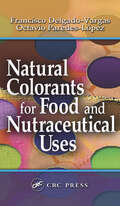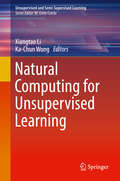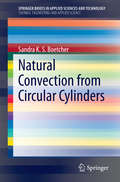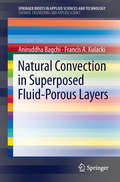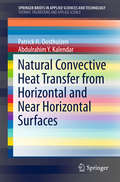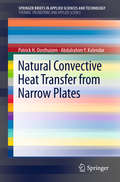- Table View
- List View
Native Americans in Sports: African Americans In Sports
by C. Richard KingOffers full coverage of Native American athletes and athletics from historical, cultual and indigenous perspectives, from before European intervention to the 21st century. There are entries devoted to broader cultural themes, and how these affect and are affected by the sport.
Native Crops in Latin America: Biochemical, Processing, and Nutraceutical Aspects (Food Biotechnology and Engineering)
by Ritva Repo-Carrasco-Valencia Mabel Cristina TomásFunctional foods improve health and can reduce the risk of different diseases. In this sense, a variety of bioactive compounds present in functional foods are able to modulate inflammatory responses or exhibit interesting bioactivities such as antihypertensive, antioxidants, anticancer, antimicrobials, anticariogenics, among others. There is a revalorization and mounting characterization on ancient grain crops of Latin America such as chia, amaranth, quinoa, Andean lupin, sacha inchi. This area also posseses a huge variety of native fruits such as camu camu, goldenberry, lucuma, which have health-promoting compounds. Native Crops in Latin America: Biochemical, Processing, and Nutraceutical Aspects explores recent investigations related to the potential use of the native crops as sources of bioactive compounds (proteins, hydrolysates, peptides, antioxidants, essential lipids, dietary fiber, pre- and probiotics) and as ingredients in functional foods. Key Features: Contributes to increasing knowledge of Latin American crops Contains information of various native crops and nutraceutical potentiality Discusses characterization of their by-products Explores revaluation and food application for enrichment food matrices This book contains recent findings impacting research in subjects such as cardiovascular and gastrointestinal systems, gut microbiota, delivery systems, product development, and gastronomy. Such information on Latin American crops may significantly influence the well-being, health, and nutrition of consumers. This will be a useful resource for food scientists, food technologists, nutritionists, ingredient manufacturers, and health care professionals, and relevent knowledge for any University’s Food Science department. Also available in the Food Biotechnology and Engineering series: Volatile Compounds Formation in Specialty Beverages, edited by Felipe Richter Reis and Caroline Mongruel Eleutério dos Santos (ISBN: 9780367631901) For a complete list of books in this series, please visit our website at: https://www.routledge.com/Food-Biotechnology-and-Engineering/book-series/CRCFOOBIOENG
NATO and Weapons of Mass Destruction: Regional Alliance, Global Threats (Contemporary Security Studies)
by Eric TerzuoloNATO was hugely successful in facing off the Soviet Union during the Cold War. But has it been equally successful in addressing the "new threats" of the post-Cold War era? This new study assesses the organization's political and military initiatives, and how its outreach to Russia, Ukraine, and other countries in the Euro-Atlantic and Mediterranean regions, devoted considerable attention to WMD proliferation risks. It also probes the political factors, both inside and outside NATO, as well as resource constraints, which have limited the alliance's "added value" in the international community's effort to combat proliferation. The events of 11 September 2001 and bitter intra-alliance controversy over the 2003 Iraq intervention have highlighted questions regarding NATO's future role, and even its continued viability. This is a serious reflection on how the alliance should figure in the fight against WMD and terrorist threats and an examination of today's key issues, including the use of force in international relations and the possibility of constructing new, post-Cold War collective security rules. This is the first study to evaluate, critically and in-depth, how a long-standing security organization has adapted - and must continue to adapt - to the global security challenges of our time. This book will be of great interest to all students and scholars of international politics, military history and all readers interested in the future of NATO and international security.
Natural Additives in Foods
by German Ayala ValenciaAdditives have been used in the food sector for centuries, aiming to maintain or improve food quality in terms of freshness, appearance, texture and taste. Most food additives are synthetic chemical compounds classified as antioxidants, antimicrobials, colorants and sweeteners. In the last decades, several synthetic food additives have been correlated with adverse reactions in humans, which has caused the safety of synthetic food additives to be reviewed and discussed by international organizations. At the same time, there is increasing consumer demand for more natural and environmentally friendly food products and additives. Therefore, synthetic food additives have been replaced with natural food additives. Although the use of natural additives is a hot topic in food science, to date no book has systematically reviewed the application of natural additives in food products. Natural additives in foods presents an exhaustive analysis of the most recent advances in the application of natural additives in the food sector. Covering natural antioxidants, antimicrobials, colorants and sweeteners, this text also focuses on unconventional sources of natural additives, valorization and toxicological aspects, consumer attitudes and regulatory aspects. The main applications of natural antioxidants are fully covered, including polyphenols, ascorbic acid, carotenoids, tocopherols and proteins. Natural antimicrobial applications from polyphenols and essential oils to poly-L-Lysine are analyzed, as are natural colorants like anthocyanins, annatto, betalains and paprika. The encapsulation, trapping, and adsorption of natural additives are studied, and consumer perceptions and preferences are major focuses. Researchers will find up-to-date regulatory specifics for the United States and European Union.For any researcher in need of an expansive single source containing all relevant and updated information for the use of natural additives in foods, this book is a much needed addition to the field.
Natural and Cultural Diversity in the Himalaya (SpringerBriefs in Environmental Science)
by Vishwambhar Prasad SatiThe Himalaya is the new folded mountain system – the tallest and the youngest in the world. It has a rich diversity – natural and cultural, and diversity in all walks of life. Most of its uniqueness is unknown because of its remoteness. Even, the native people are not aware of them. This book aims to describe the uniqueness of the Central Himalaya in terms of its natural and cultural diversity in detail. Supported by original figures and primary data, this book is empirically tested. It is mainly based on observation and participation and the use of a qualitative approach. Although lots of work has been carried out on the various aspects of the Himalayan region yet, a detailed description of the natural and cultural diversity is yet to be done. This book steps forward to elaborate on some of the unique natural and cultural features of the Central Himalaya, which are worthy to be known about. It contains a total of 10 chapters. Four chapters are devoted to natural diversity and four chapters comprise cultural diversity. Besides, the introduction and conclusions are the first and the last chapters of the book, respectively. The book is the first of its kind and will be useful to all stakeholders – students of all standards, research scholars, academicians, policymakers, native people, tourists, and the general public.
Natural and Engineered Solutions for Drinking Water Supplies: Lessons from the Northeastern United States and Directions for Global Watershed Management
by Emily Alcott Mark S. Ashton Bradford S. GentryIlluminating opportunities to develop a more integrated approach to municipal water system design, Natural and Engineered Solutions for Drinking Water Supplies: Lessons from the Northeastern United States and Directions for Global Watershed Management explores critical factors in the decision-making processes for municipal water system delivery. Th
Natural and Enhanced Attenuation of Contaminants in Soils, Second Edition
by Raymond N. Yong Catherine N. MulliganNatural attenuation has become an effective and low-cost alternative to more expensive engineered remediation. This new edition updates the principles and fundamentals of natural attenuation of contaminants with a broader view of the field. It includes new methods for evaluating natural attenuation mechanisms and microbial activity at the lab and field scales. Case studies, actual treatments and protocols, theoretical processes, case studies, numerical models, and legal aspects in the natural attenuation of organic and inorganic contaminants are examined. Challenges and future directions for the implementation of natural attenuation and enhanced remediation techniques are also considered.
Natural and Enhanced Remediation Systems
by Suthan S. SuthersanBuilding on the success of bioremediation and phytoremediation technologies, Natural and Enhanced Remediation Systems explores remediation techniques that use the beneficial effects provided by Mother Nature. Written by a leader in the industry, the book provides state-of-the-art information on natural and enhanced remediation techniques such as mo
Natural and Synthetic Fiber Reinforced Composites: Synthesis, Properties and Applications
by Sanjay M. Rangappa Dipen Kumar Rajak Suchart SiengchinNatural and Synthetic Fiber Reinforced Composites Discover a comprehensive exploration of fiber reinforced polymers by an expert team of editors Fiber reinforced polymer (FRP) composites offer several unique properties that make them ideal for use in a wide range of industries, from automotive and aerospace to marine, construction, and co-industrial. In Natural and Synthetic Fiber Reinforced Composites: Synthesis, Properties and Applications, a distinguished team of mechanical engineers delivers a comprehensive overview of fiber reinforced composites. This edited volume includes thorough discussions of glass-, cotton-, and carbon-fiber reinforced materials, as well as the tribological properties and non-structural applications of synthetic fiber composites. Readers will also find practical explorations of the structural evolution, mechanical features, and future possibilities of fiber, textile, and nano-cementitious materials. The physical and chemical properties of cotton fiber-based composites are explored at length, as are the extraordinary mechanical, thermal, electrical, electronic, and field emission properties of carbon nanotubes. This singular book also includes: A thorough discussion of recent advancements in natural fiber reinforced polymer composites, their implications, and the opportunities that arise as a result A comprehensive exploration of the thermal behavior of natural fiber-based composites An insightful review of the literature on sisal fiber with polymer matrices A response to the growing research gap in the existing literature regarding natural fiber-based polymer composites and solutions to address it Perfect for scientists, engineers, professors, and students working in areas involving natural and synthetic reinforced polymers and composites, Natural and Synthetic Fiber Reinforced Composites: Synthesis, Properties and Applications offers a one-of-a-kind resource to help readers understand a critical and rapidly evolving technology.
Natural and Synthetic Waxes: Origin, Production, Technology, and Applications
by Ernst J. Krendlinger Uwe H. WolfmeierNatural and Synthetic Waxes A compilation of all relevant information for the production and use of waxes in technical applications Waxes are among the oldest organic substances used by mankind. Before all others, beeswax is known to have played a role in human history for thousands of years. But over time, many other wax species have been detected and exploited, and prepared for different utilizations. Today, we possess knowledge of a great variety of different types of waxes. Unfortunately, there still is no broadly accepted definition of a wax: for the relatively few wax chemists, waxes are usually defined by their physico-chemical properties more than by their chemical constitution. Waxes are not uniform but oligomeric and polymeric substances, not simply describable with a chemical formula. The realm of waxes encompasses fully or partly natural, refined, partly or fully synthetic products, which can be extended by “wax-like” products which do not fulfil all definition criteria. Waxes are offered in different forms like pellets, granules, powders, or micropowders. Their number of technical applications runs into thousands. However, waxes in most cases are just adjuvants or additives, and with few exceptions like candles not known to a broader public. Only few publications over the last decades tried to present a more comprehensive overview of heir chemistry, chemical composition, their physical and analytical properties, their applications, and their sometimes astonishing history. Based on personal experience and expertise, the authors intend to present an overview on the main classes of waxes, their origin, history, future, and potential fate. Economical aspects like market size and development, ecological impacts and challenges, and regulatory issues are also addressed. Waxes are indispensable products in everyday life and in industry and technology, though mostly not even visible or distinguishable to experts. They deserve more than the role of a “poor cousin” in chemistry and technology.
Natural Arsenic in Groundwater: Proceedings of the Pre-Congress Workshop "Natural Arsenic in Groundwater", 32nd International Geological Congress, Florence, Italy, 18-19 August 2004
by Jochen Bundschuh Prosun Bhattacharya D. ChandrasekharamArsenic contamination has become a global phenomenon. With the development of advanced technological detection tools, more geographical areas have been identified. The people most affected are those in the poorer socio-economic groups. The research articles in this book have been contributed by scientists working in areas severely a
Natural Attenuation: CERCLA, RBCAs, and the Future of Environmental Remediation
by Patrick V. Brady Michael V. Brady David J. BornsNatural Attenuation: CERCLA, RBCAs, and the Future of Environmental Remediation presents the concept of "natural attenuation"-the tendency of soils to severly limit the toxicity of many types of hazardous waste. It reviews and updates the most recent findings from the field and lab and shows how natural attenuation is rapidly changing the direction and focus of environmental remediation. Outlining the legal and regulatory framework that has made waste remediation so costly, this book shows how applying an understanding of natural attenuation can decrease cleanup outlays while lowering risks to human health. Natural Attenuation: CERCLA, RBCAs, and the Future of Environmental Remediation makes it clear why natural attenuation will be relied upon more and more in the future.
Natural Attenuation of Trace Element Availability in Soils
by Rebecca Hamon Mike McLaughlin Enzo LombiUnderstanding attenuation processes is important not only for predicting the behavior of contaminants in soil and formulating remediation strategies, but also for mitigating and enhancing the availability of micronutrients in soil for agricultural applications. Natural Attenuation of Trace Element Availability in Soils brings together pioneering re
Natural Beekeeping: Organic Approaches to Modern Apiculture
by null Ross ConradWhether you are a novice looking to get started with bees, an experienced apiculturist looking for ideas to develop an integrated pest-management approach, or someone who wants to sell honey at a premium price, this is the book you&’ve been waiting for.Now revised and updated with new resources and including full-color photos throughout, Natural Beekeeping offers all the latest information in a book that has already proven invaluable for organic beekeepers. The new edition offers the same holistic, sensible alternative to conventional chemical practices with a program of natural hive management, but offers new sections on a wide range of subjects, including:The basics of bee biology and anatomyUrban beekeepingIdentifying and working with queensParasitic mite controlHive diseasesAlso, a completely new chapter on marketing provides valuable advice for anyone who intends to sell a wide range of hive products.Other chapters include:Hive ManagementGenetics and BreedingThe Honey HarvestThe Future of Organic BeekeepingRoss Conrad brings together the best &“do no harm&” strategies for keeping honeybees healthy and productive with nontoxic methods of controlling mites; eliminating American foulbrood disease without the use of antibiotics; selective breeding for naturally resistant bees; and many other detailed management techniques, which are covered in a thoughtful, matter-of-fact way.
Natural Bioactive Products in Sustainable Agriculture
by Joginder Singh Ajar Nath YadavThis book discusses various aspects of bioactive natural products employed in the agrochemical and agriculture sectors. It covers the use of plants, microorganisms, and microbial metabolites as eco-friendly, cost-effective, and sustainable alternatives to chemicals in the field of agriculture. Written by active researchers and academics, the book highlights state-of-art products in the field, as well as the gaps, challenges, and obstacles associated with the use of plants, microbes and their products. Given its scope, it is a valuable resource for the scientific community and professionals in enterprises wanting insights into the latest developments and advances in the context of biological products, including their applications, traditional uses, modern practices, and strategies to harness their full potential.
Natural Biomarkers for Cellular Metabolism: Biology, Techniques, and Applications (Series in Cellular and Clinical Imaging)
by Vladimir V. Ghukasyan Ahmed A. HeikalFrom the Lab to Clinical Settings-Advances in Quantitative, Noninvasive Optical DiagnosticsNoninvasive fluorescence imaging techniques, novel fluorescent labels, and natural biomarkers are revolutionizing our knowledge of cellular processes, signaling and metabolic pathways, the underlying mechanisms for health problems, and the identification of n
Natural-Born Cyborgs: Minds, Technologies, and the Future of Human Intelligence
by Andrew J. ClarkCognitive scientist Clark believes we are liberating our minds, thanks to our penchant for inventing tools that extend our abilities to think and communicate, starting with the basics of pen and paper and moving on to ever more sophisticated forms of computers. In this lively and provocative treatise, Clark declares that we are, in fact, "human-technology symbionts" or "natural-born cyborgs," always seeking ways to enhance our biological mental capacities through technology, an intriguing claim he supports with a brisk history of "biotechnology mergers," which currently range from pacemakers to the way a pilot of a commercial airplane is but one component in an elaborate "biotechnological problem-solving matrix." Cell phones, Clark explains, are "a prime, if entry-level cyborg technology," as are Internet search engines. As Clark clearly and cheerfully discusses cognitive processes, how we build "better worlds to think in," opaque versus transparent technologies, and the fluidity of our sense of self and adaptation to environmental changes, he offers hope that our brainy species can use its ever-evolving
The Natural Building Companion: A Comprehensive Guide to Integrative Design and Construction
by null Jacob Deva Racusin null Ace Mcarleton"Fun. Easy to Read...One of the best natural building books published in recent years."—Bill Steen, coauthor, The Straw Bale HouseNatural buildings not only bring satisfaction to their makers and joy to their occupants, they also leave the gentlest footprint on the environment. In this complete reference to natural building philosophy, design, and technique, Jacob Deva Racusin and Ace McArleton walk builders through planning and construction, offering step-by-step instructions on:• siting and site analysis• choosing materials• integrating basic structural considerations into a design• strategies for heating/cooling efficiency and moisture management• planning for acoustics• developing an integrative design• navigating budgeting, code compliance, and project management• creating the foundation, wall system, roof, and floors• selecting and making plasters and paints• evaluating options for mechanical and utility systems• protecting against fire and insects• integrating structures within landscape, climate, and human communities...and moreApplicable to building in climates that are cold and wet, hot and dry, or somewhere in-between, The Natural Building Companion provides the tools necessary to understand basic principles of building science, including structural and thermal engineering, and hydrodynamics. This guide offers thorough, up-to-date, and advanced installation details and performance characteristics of straw-bale, straw-clay, woodchip-clay, and cellulose wall systems, as well as earthen and stone wall systems and a variety of framing, roofing, flooring, mechanical system, and finishing options. This fully-illustrated volume informs professionals making the transition from conventional building, homeowners embarking on their own construction, or green builders who want comprehensive guidance on natural-building options.
Natural Capital Accounting and Valuation of Ecosystem Services, Karnataka State, India: Ecosystem Services
by T.V. Ramachandra Bharath Haridas Aithal Bharath Setturu S. Vinay K.S. Asulabha V. SincyThis book describes the valuation of services of ecosystems (forests, agriculture and aquatic) for Karnataka State, India, as per the validated statistical framework for natural capital accounting – SEEA: System of Environmental-Economic Accounting (SEEA.un.org). According to SEEA protocol, ecosystem services are defined as the contributions of ecosystems to the benefits that are used in economic and other human activities. The valuation of ecosystem services (VES) provides an unbiased framework to value unaccounted ecosystem benefits and helps in developing meaningful policy interventions. The approach allows for adjusted regional or national accounts which reflect the output of ecosystem services as well as the depletion of natural resources and the degradation costs (externalized costs of the loss of ecosystem services) of ecosystems in economic terms. In this perspective, the current publication, focusing on the natural capital accounting and valuation of ecosystem services in Karnataka, India, can help raise awareness and provide a quantitative tool to evaluate the sustainability of policies. The book would aid as knowledge base for many professionals, institutions and government agencies taking up the task of natural capital accounting and valuation of ecosystem services across the countries worldwide.
Natural Colorants for Food and Nutraceutical Uses
by Francisco Delgado-Vargas Octavio Paredes-LopezAs our understanding of the science and functions of color in food has increased, the preferred colorants, forms of use, and legislation regulating their uses have also changed. Natural Colorants for Food and Nutraceutical Uses reflects the current tendency to use natural pigments. It details their science, technology, and applications as well as t
Natural Computing for Unsupervised Learning (Unsupervised and Semi-Supervised Learning)
by Xiangtao Li Ka-Chun WongThis book highlights recent research advances in unsupervised learning using natural computing techniques such as artificial neural networks, evolutionary algorithms, swarm intelligence, artificial immune systems, artificial life, quantum computing, DNA computing, and others. The book also includes information on the use of natural computing techniques for unsupervised learning tasks. It features several trending topics, such as big data scalability, wireless network analysis, engineering optimization, social media, and complex network analytics. It shows how these applications have triggered a number of new natural computing techniques to improve the performance of unsupervised learning methods. With this book, the readers can easily capture new advances in this area with systematic understanding of the scope in depth. Readers can rapidly explore new methods and new applications at the junction between natural computing and unsupervised learning. Includes advances on unsupervised learning using natural computing techniquesReports on topics in emerging areas such as evolutionary multi-objective unsupervised learning Features natural computing techniques such as evolutionary multi-objective algorithms and many-objective swarm intelligence algorithms
Natural Convection from Circular Cylinders
by Sandra K. S. BoetcherThis book presents a concise, yet thorough, reference for all heat transfer coefficient correlations and data for all types of cylinders: vertical, horizontal, and inclined. This book covers all natural convection heat transfer laws for vertical and inclined cylinders and is an excellent resource for engineers working in the area of heat transfer engineering.
Natural Convection in Superposed Fluid-Porous Layers
by Aniruddha Bagchi Francis A. KulackiNatural Convection in Composite Fluid-Porous Domains provides a timely overview of the current state of understanding on the phenomenon of convection in composite fluid-porous layers. Natural convection in horizontal fluid-porous layers has received renewed attention because of engineering problems such as post-accident cooling of nuclear reactors, contaminant transport in groundwater, and convection in fibrous insulation systems. Because applications of the problem span many scientific domains, the book serves as a valuable resource for a wide audience.
Natural Convective Heat Transfer from Horizontal and Near Horizontal Surfaces (SpringerBriefs in Applied Sciences and Technology)
by Patrick H. Oosthuizen Abdulrahim Y. KalendarThis book deals with a natural convective heat transfer situation of significant practical importance that has not been adequately dealt with in existing texts or widely available review papers: natural convective heat transfer from horizontal and near horizontal surfaces. The aim is to provide the reader with an understanding of past studies of natural convective heat transfer from horizontal surfaces and a more detailed review of contemporary studies. The more recent work deals with heat transfer from surfaces that have more complex shapes than previously considered, with heat transfer in situations in which laminar, transitional, and turbulent flow occur; in situations where the surface is inclined at a relatively small angle to the horizontal; and in situations where there is a covering surface above the heated surface. The authors further present methods for predicting heat transfer rates in all of the situations.
Natural Convective Heat Transfer from Narrow Plates
by Patrick H. Oosthuizen Abdulrahim KalendarNatural Convective Heat Transfer from Narrow Plates deals with a heat transfer situation that is of significant practical importance but which is not adequately dealt with in any existing textbooks or in any widely available review papers. The aim of the book is to introduce the reader to recent studies of natural convection from narrow plates including the effects of plate edge conditions, plate inclination, thermal conditions at the plate surface and interaction of the flows over adjacent plates. Both numerical and experimental studies are discussed and correlation equations based on the results of these studies are reviewed.
